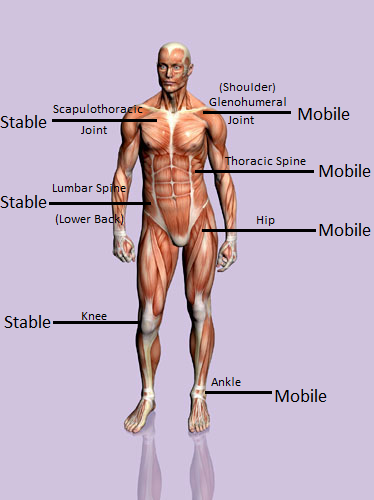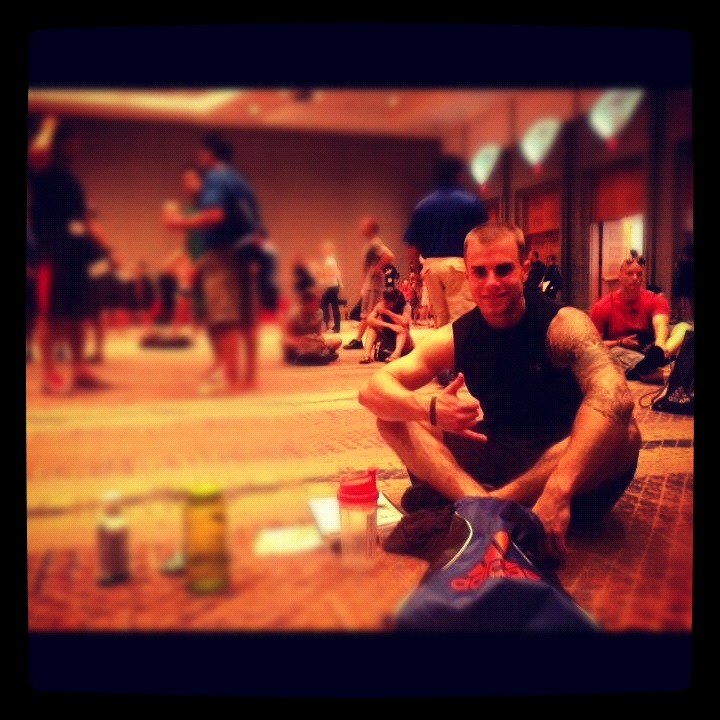Nobody likes getting injured, whether you play a sport or are just an active person it is important to stay healthy and functionable so you can carry on with your life as normal. There are two components when it comes to injuries, care and prevention. Most people focus on the caring aspect so they can get back to a normal state once they become injured, but why not prevent it in the first place? Thats why training in movement patterns and focusing on compound lifts that use multiple joints are two great ways to stay functioning good and also to prevent injuries. The body has 5 major movements which are; push, pull, hip hinge, bend at the knee, and twist at the core/mid section. If your program hits all 5 of these movements not only will you have performed and practiced the body's proper movement patterns, which will in turn create better movement and prevent injury much better then any isolation exercise, but you will have also used just about every muscle in your body by the end of your workout. The best piece of information you can possibly use to prevent injury and understand how the body and joints work/move is the Mobility Stability Continuum (As seen below).
Knowing and understanding this continuum can play a huge part in injury care and prevention, but can also lead to better movement. As you can see in the picture above the joints have a pattern that goes back and forth between mobile and stable joints from head to toe. Now, when you are trying to determine what exactly is injured, how it was injured, and how you can fix the injury you need to look ABOVE and BELOW the joint that is in pain or is injured. This is because the body will naturally try to compensate for injuries by making another joint try to take on the job of the imporperly functioning joint. Since the continuum goes back and forth between mobile and stable joints, compensation can be a bad thing. For example, if someone came to me saying they had knee pain in their right leg but do not know why or where it came from, I would put them through the necessary tests of the Functional Movement Screen to find out if it was their hip or their ankle that was lacking mobility. Lets say they pass the hip dominant tests, that would then tell me that the source of the problem is most likely the ankle of the right leg (remember that when traumatic injuries occur to a certain joint, this may not apply). If their ankle is lacking mobility, their knee is going to try and compensate for that. The problem with that is that knee is a stable joint and when it tries to be mobile it is doing things it is not supposed to do, which can lead to overuse, bad movement, or other injuries. So then we would need to perform the proper exercises to ensure that this client can return to the full ROM (range of motion) of the ankle.
This can be applied to any joint, head to toe, which is why the mobility stability continuum is such a great tool. The FMS (functional movement screen) system is probably one of the best things to happen to the fitness industry because it brought this continuum and all of the exercises needed to correct poor movement skills and injured joints. So big thanks to Gray Cook and Lee Burton for bringing us the FMS system! Now, although this is one of the biggest and best things when it comes to injury care and prevention, there is more to it. Prehab is always big when it comes to injurys or preventing them. The key to prehab is to work what the client doesn't usually work or what they need to be working. This means that if this person has horrible balance, work on core stability and progress them through unstable surfaced exercises to ensure that they will gain balance. Good movement is also extremely important. If someone has good movement that means they have good muscular balance, range of motion, posture (joints are aligned properly), flexibility, and tissue tolerance. So if the client doesn't have good movement, work on all of these things to create better movement and if you do this the right way there is absolutely no reason why you will not succeed and see results.
This can be applied to any joint, head to toe, which is why the mobility stability continuum is such a great tool. The FMS (functional movement screen) system is probably one of the best things to happen to the fitness industry because it brought this continuum and all of the exercises needed to correct poor movement skills and injured joints. So big thanks to Gray Cook and Lee Burton for bringing us the FMS system! Now, although this is one of the biggest and best things when it comes to injury care and prevention, there is more to it. Prehab is always big when it comes to injurys or preventing them. The key to prehab is to work what the client doesn't usually work or what they need to be working. This means that if this person has horrible balance, work on core stability and progress them through unstable surfaced exercises to ensure that they will gain balance. Good movement is also extremely important. If someone has good movement that means they have good muscular balance, range of motion, posture (joints are aligned properly), flexibility, and tissue tolerance. So if the client doesn't have good movement, work on all of these things to create better movement and if you do this the right way there is absolutely no reason why you will not succeed and see results.


